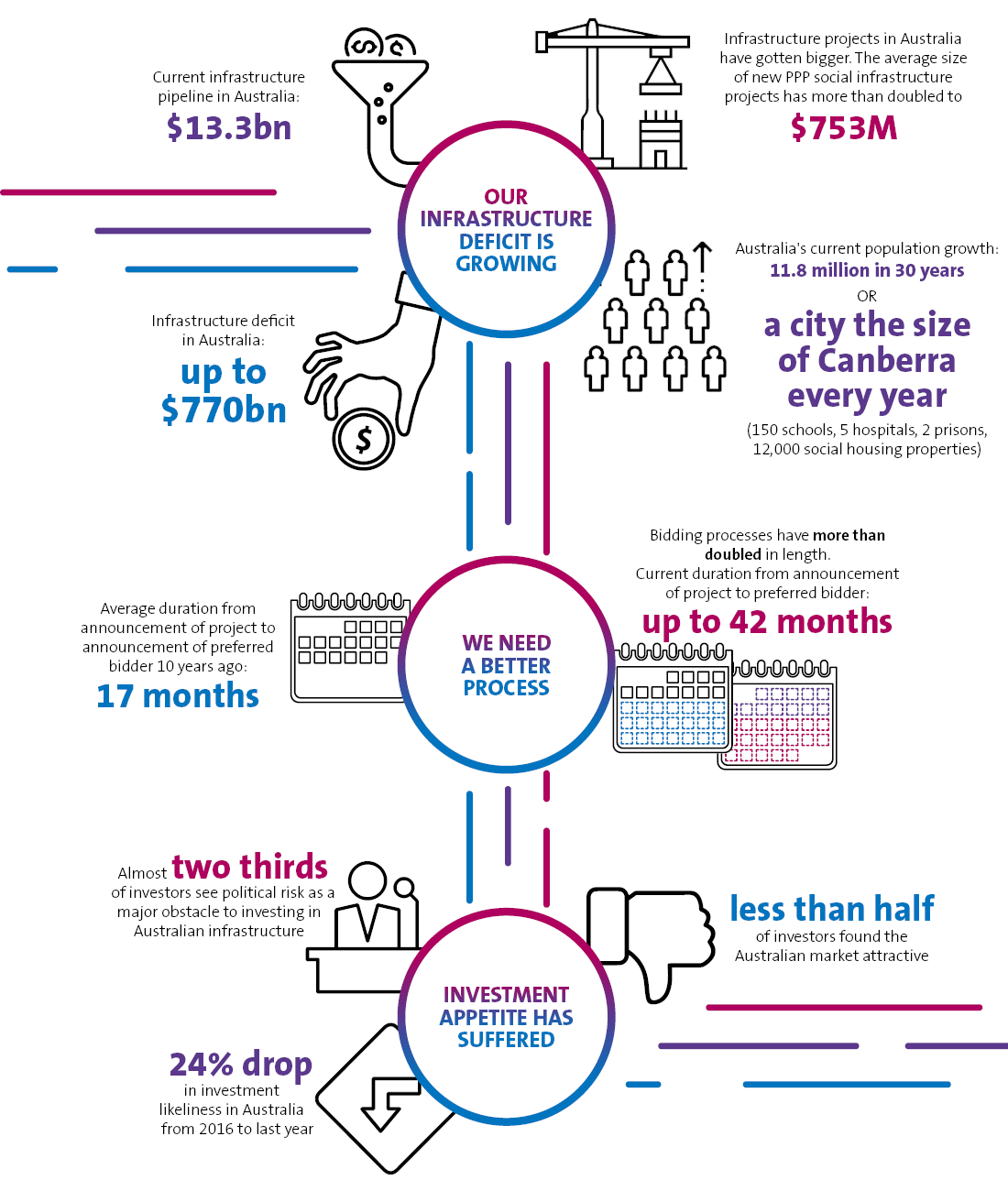Time to act on Australia's social infrastructure deficit: four steps to address the increasing shortfall
For the past two decades, Australia has been a leader in the use of public-private partnerships (PPPs) for social infrastructure projects. Its successes were so pronounced that countries such as Canada would send experts and civil servants to learn from local authorities how to design, structure and manage these projects. The PPP infrastructure market grew in maturity and many complex projects were delivered using this approach.
Canberra, we have a problem...
Change is crucial to meeting Australia's growing social infrastructure needs. Estimates of the infrastructure deficit in Australia range from $300 billion to $770 billion. Either way, the deficit is large. Even if we were to take the smaller of these estimates and assume a mere 10% represented the need for additional social infrastructure, we would still find that the current $13.3 billion is not large enough.
Making the problem worse
Pair the above with cumbersome and lengthy bidding processes and you have a problem. While roughly 10 years ago the average time lag for infrastructure projects from announcement to preferred bidder was 17 months, recent projects have stretched that process out to as much as 42 months (eg the redevelopment of Westmead Hospital in NSW).
Size, certainty and innovation are the key
In our view, governments can take four steps to address the social infrastructure deficit and leverage private sector innovation and collaboration:
- Smaller projects get you there faster: First, governments need to restore balance into the pipeline by introducing more small, critical projects.
- An efficient process benefits all: Second, governments should remember that business appreciates one factor above all else: certainty.
- Set the private sector a challenge: Third, governments should identify 'challenges' for the private sector to tackle.
- Challenge current operating models: Fourth, governments should introduce a contestability process, through which private sector participants can identify inefficiencies in the delivery of the services supported by social infrastructure assets and pitch solutions.
Time to lead again
Australia was once a pioneer in the usage of the PPP model for social infrastructure, but that is no longer the case. While the four steps we've proposed might not necessarily be the answer to address all the issues or be appropriate in all circumstances, they will lead to market-wide improvements. The time is right for a conversation on how best to tackle this growing problem and the tools we'll need to do so.
Australia's social infrastructure shortfall





